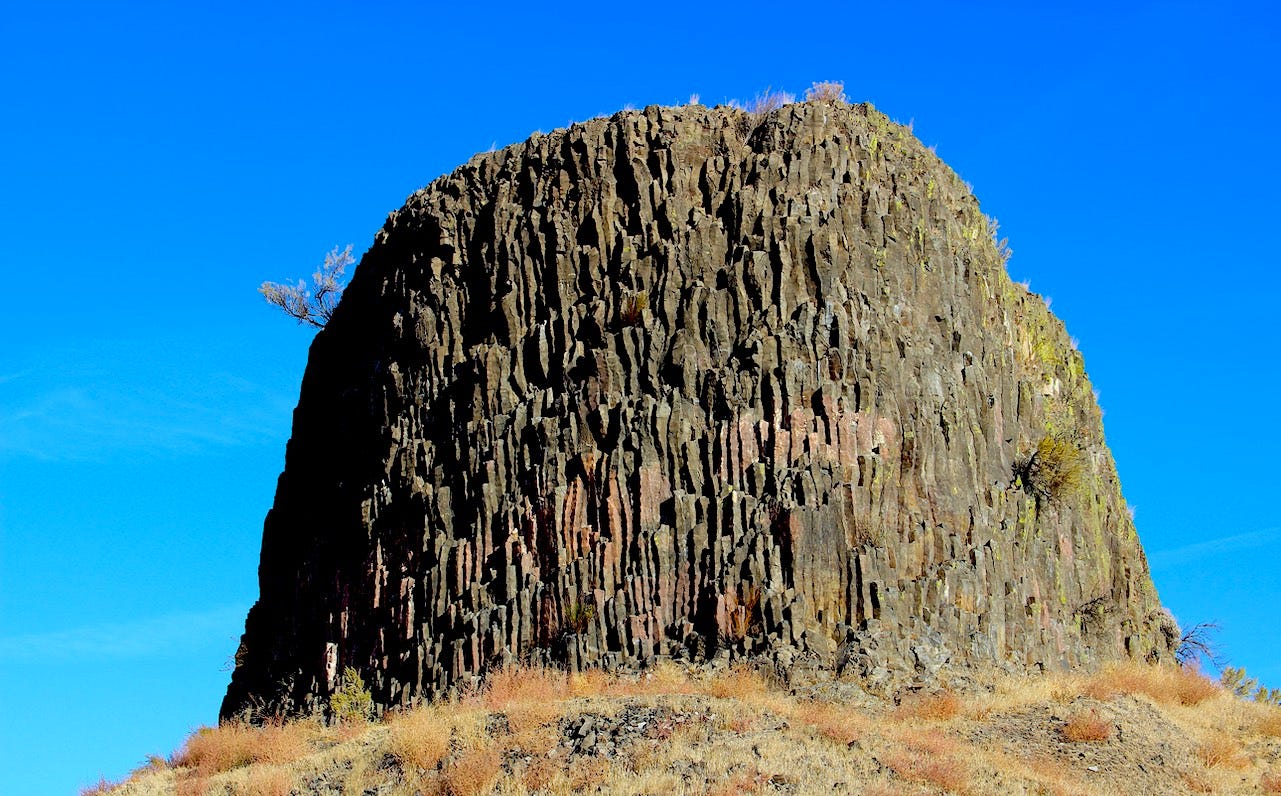Hat Rock at its perch near the Columbia River east of Umatilla, Oregon. A creation of the Pomona member of the Columbia River Basalt Group, it features some of the thinnest basalt columns (about the thickness of a baseball bat) and a mention in Lewis & Clark’s journals, from October 1805. “(A) rock on the Lard. Shore resembling a hat” William Clark noted, as the Corps of Discovery made its final turn toward the Pacific Ocean.
Rock climbers at “The Feathers” rock formation in Frenchman Coulee near Vantage, WA. The Feathers derive from the Roza member of the Columbia River Basalt Group. The Roza member features some of the largest basalt columns in the Northwest, many wider than a full-size pickup truck.
You don’t have to love basalt to live in the inland Northwest, but it helps to square up to a co-existence with it. It’s not a gem stone. If you’re a geologist or a rock hound you may have to forgive it for deeply burying the enchanting, older rocks—the glistening gneisses, schists, and granitic stones that reside in the deeper basements of the region. More to the point, it’s not going anywhere, especially now that it’s well on shore, far from an oceanic subduction zone that would inexorably swallow it and likely belch it back toward the surface in big balloons of granite.
A massive pile of volcanic “spatter” above Rock Creek in northwest Whitman County. The “spatter” is much lighter than basalt because it’s been intensively infused and perforated by volcanic gases, giving it the look of a sponge when examined up close. Basalt forming lava from the same vents traveled 100 miles to the west in the Roza flow, where it cooled to create “The Feathers” and other basalt structures in Frenchman Coulee and Potholes Coulee to the north.
To continue reading, please subscribe to The Daily Rhubarb
A vivid testimony to the power of the Ice Age floods that carved out the lower Columbia basin is the Willamette meteorite which was discovered (first by Native Americans) in the Willamette valley near Portland. Strangely, though, there was no meteor crater in sight. Geologists eventually determined it is the most exotic of erratics—that it likely landed in the Canadian Rockies and became entrained in the Purcell Trench glacier. Then, during a catastrophic breakup of the Lake Missoula ice dam, the 15.5 ton meteorite was transported on one of the enormous icebergs that the floodwaters carried down and through the Columbia River gorge.
—tjc










